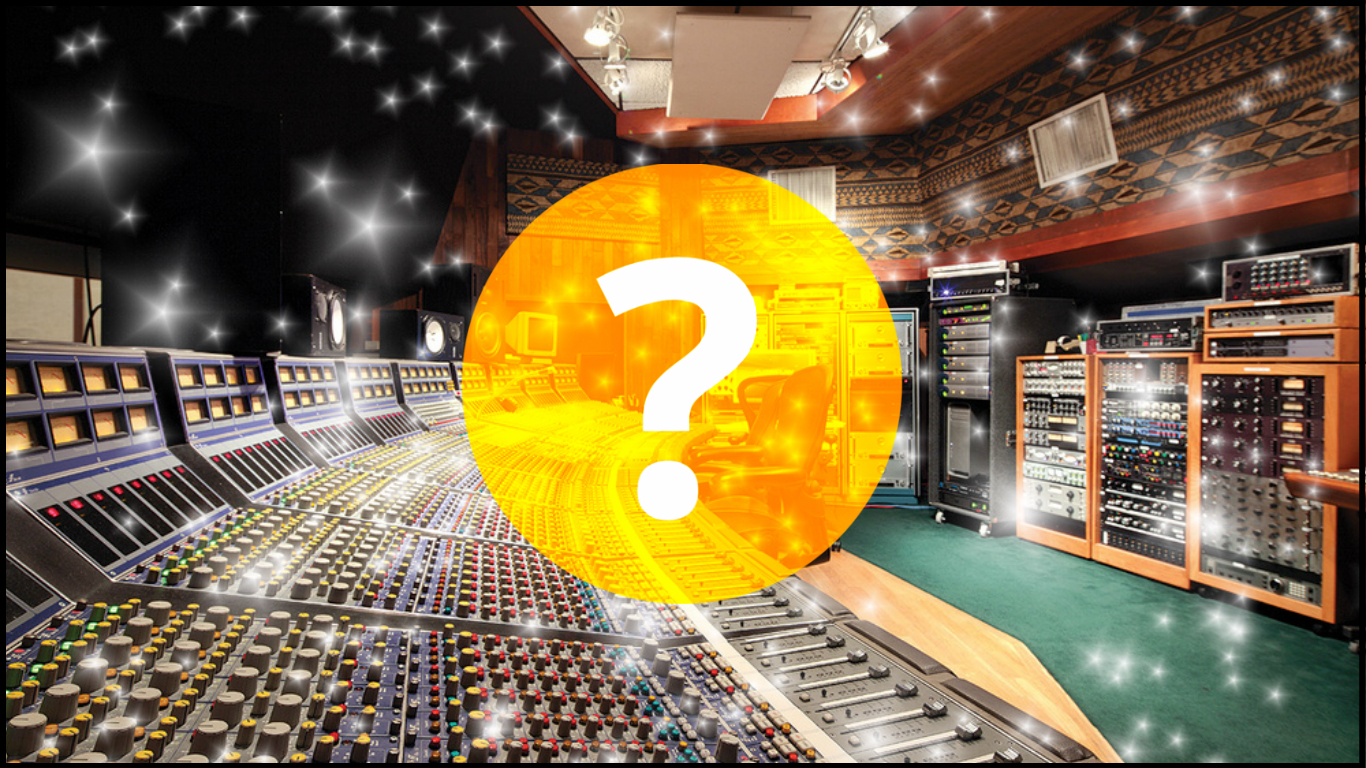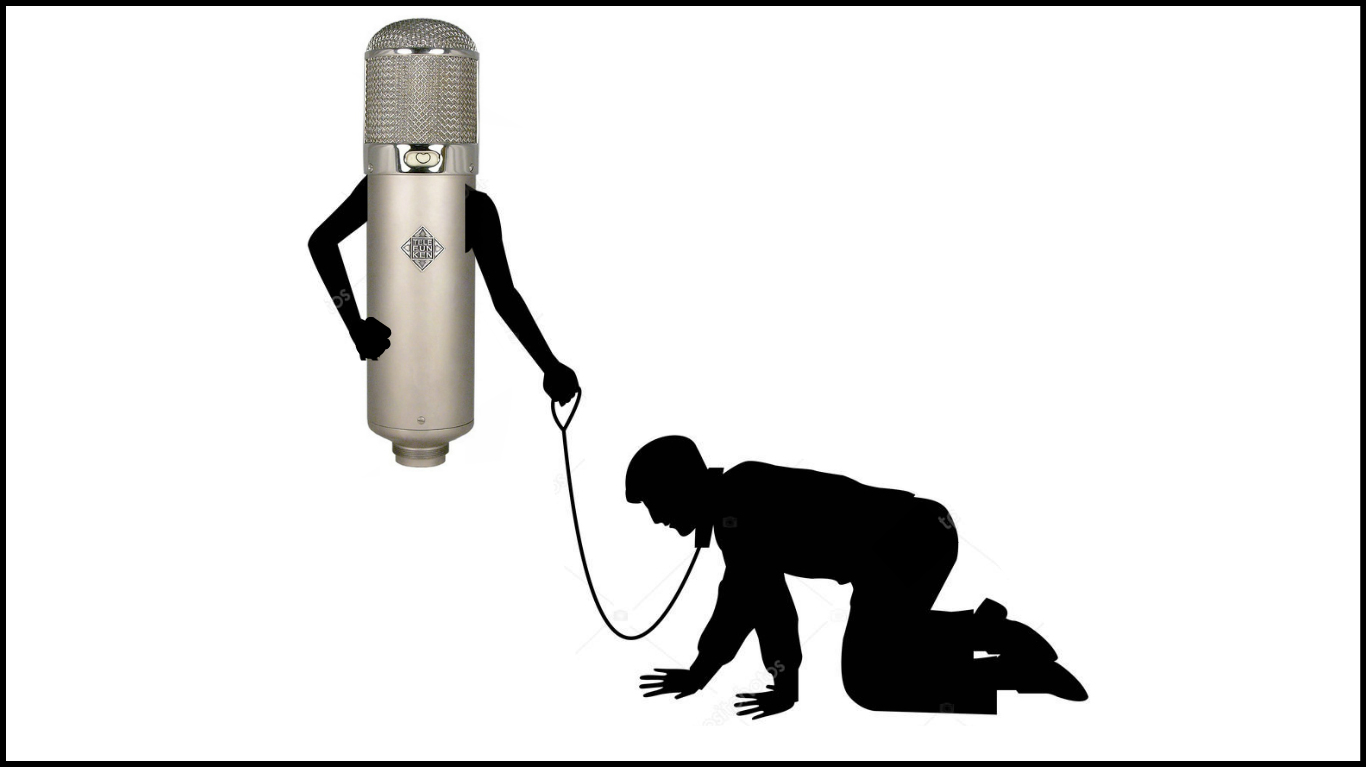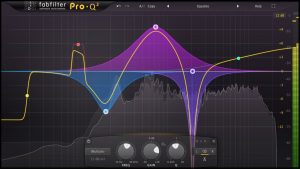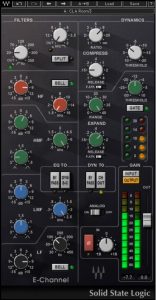| By Thomas Brett |
Introduction:
One of the most exciting aspects of music production is the gear.

Unfortunately though, this causes a lot engineers to fall into the trap of focusing so heavily on the equipment that they forget it’s the creative decisions made while using said gear that leads to great results, not the gear itself…
The truth is, a good engineer with a well-trained ear can make a great sounding record using pretty much any tool they’re handed! A perfect practical example of “ear over gear” can be found in State Champs engineer Kyle Black’s approach:
VIDEO: In the following Nail The Mix excerpt, Kyle mixes the rhythm guitars for State Champs’ hit record “Secrets” with nothing more than a few simple moves on a single SSL channelstrip plugin:
Master The Tools, Don’t Let Them Master You!

What can we learn from Kyle?
The video above, and the entirety of the State Champs NailTheMix session for that matter, are masterclasses on making quick tonal fixes and not over-complicating things with hundreds of unnecessary EQ plugins inserted on every channel.
After All…
The main purpose of mixing should be to serve the song, not to stroke your ego as a gearhead!
And with this being the case…
Here are 3 important tips to help shift your mixing focus back towards what matters most:
1 – Mix with your ears, Not your eyes!

Two of my “go-to” EQ plugins while mixing are Fabfilter’s Pro-Q2 and the Waves SSL E-Channel. Although at their core, both of these tools serve the same basic purpose, they each have the potential to offer a significantly different workflow experience:
- With Pro-Q2, you have access to an infinite number of EQ bands, and are given a visual representation of all the moves you’re making.
 Fabfilter Pro-Q2
Fabfilter Pro-Q2
- With the Waves SSL channelstrip however, you’re limited to only four bands of EQ, and have no way of knowing what the resulting overall curve actually looks like.
 Waves SSL E-Channel
Waves SSL E-Channel
But how can these technicalities affect my EQ’ing workflow?
Well, I’ve discovered from personal experience that I’m much more likely to hold back from doing anything that “looks” too drastic when using a graphic equaliser such as Pro-Q:
- This is mainly due to the fact that seeing massive 10dB+ cuts and boosts appear on a graphic interface can make you fear that you’re mangling the audio, causing you to doubt your ears and place far too much trust in your eyes.
- With the SSL on the other hand, you have no other option but to rely solely on what your hearing, making it more likely that you’ll simply turn the knobs till’ it sounds good! (Whether it takes 1dB or 10dB…)
- This is partially why industry pros’ like CLA and Randy Staub deliver such bright, fat and aggressive sounding mixes through their SSL consoles. They don’t care about the numbers!
PS. Don’t get me wrong… By no means am I implying that one of these tools is better than the other! (I LOVE THEM BOTH!) I’m just saying that it’s important to understand how we interact with the tools we’re using, and to determine whether they’re actually allowing us to reach our full sonic potential.
2 – Fewer Strategic Moves > Several Haphazard Moves

You’ll often come across “pro” mixing tutorials teaching that you should spend ages applying dozens of tiny, surgical cuts and boosts at oddly specific frequencies for the best results while EQ’ing.
- Funnily enough, if you were to watch any of the actual pro engineers mix, you’d find that they’re much more likely to just do 1 or 2 broad, bold, musical EQ strokes based on nothing more than pure gut instinct, only to quickly move on with the next instrument and keep the creative momentum going!
- I’d even argue that a lot of the best mixes come from the guys who work the fastest! Why? Because mixing is just as much a creative process as the writing and performing of the music itself!
VIDEO: Check out the following video, in which mixing legend Chris Lord-Alge (Green Day, Muse, Nickelback) EQ’s each of the electric guitars for MUSE’s “Survival” (Which was the massively popular official soundtrack of the 2012 olympics I might add…) in a few seconds flat with some very basic EQ moves:
REMEMBER: The moment you stop listening and naturally reacting to what you’re hearing in favour of over-analyzing and predetermined “mixing formulas” is the moment that mixing ceases to be musical.
3 – Prioritise!

Take your mixing cap off for a moment and go back to being an “average” music lover.
- When you listen to a new song or artist on the radio, what do you care about the most?
- Is it the exact amount of 512Hz in the Hi-Hat direct mic? The 13.43ms attack time on the bass compressor? Or is it the tiny clipping sound on a particular vocal harmony that’s panned %100 left, buried in reverb, and plays for half a second at the end of the 2nd chorus? (GASP!)
OR…
- Is it whether the song connects with you on an emotional level? If the lift in the hook gives you the chills and makes your hairs stand on end? Whether the beat makes you want to get up and dance or bang your head while pumping your fist?
What I’m trying to say is: For the love of music… Stop prioritising the tiny details that really don’t matter all that much and set your sights on the things that got you, and everyone else into music in the first place!
Chances are, in the time you spend tweaking tiny things in an attempt to improve your songs each time you could probably just write better parts to begin with!
CONCLUSION:

Of course, there’s nothing wrong with delving deep into the technical aspects of mixing and gear… In fact it’s crucial that you’re always looking to expand your knowledge of all things audio, regardless of your current ability or previous achievements.
Just make sure that you’re not allowing your left brain to dominate your right brain when it actually comes time to making something as creative, emotional and spontaneous music!
Final Words:
This concludes “Limit Yourself!” I hope that this article has given you some new ideas to try out during your next project. Be sure to comment below if any of this information has helped you out, or if you have any questions.
Stay tuned for more production/mixing related articles in the not-so-distant future!
Thomas Brett is a producer, mixing engineer and songwriter at Brett Brothers recording studio in the UK. Check out the Brett Brothers studio website for more information and articles on all things mixing www.brettbrothersstudio.com
Want mix tips from Thomas Brett? Read them here!
 Nail The Mix is our online mixing school that gives you REAL multi-tracks from REAL bands, plus a mixing class from the producer who recorded it. Past guests include Periphery, Chelsea Grin, Machine Head and State Champs. Join now for instant access!
Nail The Mix is our online mixing school that gives you REAL multi-tracks from REAL bands, plus a mixing class from the producer who recorded it. Past guests include Periphery, Chelsea Grin, Machine Head and State Champs. Join now for instant access!
